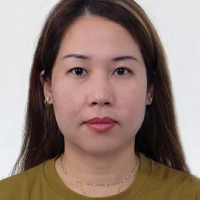- This topic has 8 replies, 5 voices, and was last updated 2 weeks, 4 days ago by
 Wah Wah Lwin.
Wah Wah Lwin.
-
AuthorPosts
-
-
2025-11-03 at 12:59 pm #51739
 Wah Wah LwinParticipant
Wah Wah LwinParticipantMalaria remains a major global public health concern and continues to be one of the leading causes of illness and death in many developing countries, particularly among young children and pregnant women (Centers for Disease Control and Prevention, 2024). In humans, malaria is caused by protozoan parasites of the Plasmodium species; P. falciparum, P. vivax, P. malariae, and P. ovale. Additionally, zoonotic species, P. knowlesi, which commonly infect monkeys in Southeast Asia, have been identified as sources of human infection and, in some cases, fatal outcomes.
Similar to the global pulic health concern, malaria remains a significant public health challenge in Thailand and therefore, an effective surveillance system is essential to support the country’s goal of malaria elimination by 2026. Malaria elimination refers to the interruption of local transmission of a specific malaria parasite species within a defined geographical area. Even after elimination is achieved, ongoing efforts are necessary to prevent the disease from re-emerging (WHO, 2024).
Data from the Ministry of Public Health (Thailand) show that P. vivax cases rose from 3,084 in 2021 to 15,659 in 2023, while P. falciparum cases increased from 62 to 492 over the same period. Most imported cases were identified and treated along Thailand’s western border with Myanmar, heightening the demand for diagnostic and treatment services.
This presentation focuses on the development of a malaria surveillance system for Thailand, outlining its (1) objectives, (2) type of surveillance approach, (3) legal basis, (4) case definition, (5) stakeholders, (6) data flow, (7) data collection and transfer methods, (8) data utilization and dissemination, and (9) evaluation indicators.
-
2025-11-04 at 12:06 pm #51787
 Hteik Htar TinParticipant
Hteik Htar TinParticipantCongratulations for your presentation, Ama Wah. Malaria is still challenging for our regions and require the comprehensive system for the control and prevention of infection.
I have learnt many points from you and I am curious to ask the questions.
Could you please explain about the village health volunteers, whether they will be trained for the surveillance system or they are already health workers from the community.
For usability and adaptability indicators evaluation, how would you suggest for collecting frequency, biannually or annually? Thanks ama.-
2025-11-05 at 8:29 am #51801
 Wah Wah LwinParticipant
Wah Wah LwinParticipantHi Hteik Htar! thank you for your comments and questions. For VHV, yes, they are trained for malaria surveillance (both passive and active case detection) and they are already volunteering for their community. Similarly, for refugees and migrants along Thai-Myanmar borders, including refugees camps, there will be camp-based workers/migrant workers who are trained for malaria surveillance, including using mobile app. for case records and reporting. At the community level, they will be reporting the cases via mobile app (paper-based in case where there are limited resources). For eMIS, responsible implementing partners/government levels will be keying-in for synchronization.
For usability and adaptability indicators, frequency of data collection is suggested for annual basis, since the calculation is based on semi-structured interviews/survey and time analysis. So, it’s worth to access the system quality with annual basis to get feedback and insights from the users/respondents.
-
-
2025-11-06 at 11:29 pm #51851
 Soe Wai YanParticipant
Soe Wai YanParticipantThank you for your very interesting presentation Ma Wah. Since I am also working in the malaria field, the content clearly shows how global malaria issues connect with Thailand’s efforts to eliminate the disease. I totally agree that the rise in P. vivax and P. falciparum cases and the challenges along the border, it gives a good understanding of the main factors affecting malaria control in the country. It also makes a strong case for why Thailand needs a well-organized, data-based surveillance system to reach and maintain its malaria elimination goal by 2026.
-
2025-11-07 at 2:37 pm #51867
 Wah Wah LwinParticipant
Wah Wah LwinParticipantThank you for your comment, Soe :)! Yes, malaria elimination cannot be achieved by a stand-alone country. It requires collective and collaborative efforts among neighboring countries. And yes, we still have a lot to do within our own country to contain disease outbreaks.
-
-
2025-11-09 at 1:27 pm #51885
 Siriluk DungdawaduengParticipant
Siriluk DungdawaduengParticipantHi Wah Eah Lwin, Your presentation on the malaria surveillance system in Thailand is very informative and well-structured. I particularly appreciate how you linked the national malaria elimination goal (by 2026) with the rising trend of P. vivax and P. falciparum cases, which effectively highlights the urgency of strengthening surveillance. The inclusion of epidemiological data from the Ministry of Public Health makes the situation analysis clear and evidence-based.
I also like that your system design covers all essential components: objectives, legal basis, data flow, stakeholders, and evaluation indicators, which shows a solid understanding of surveillance frameworks. To further enhance your presentation, you might consider adding a visual dashboard or GIS mapping to show case distribution and transmission hotspots along the Thai-Myanmar border. This would make the data more engaging and support decision-making for targeted interventions. 😃
-
2025-11-09 at 8:31 pm #51906
 Wah Wah LwinParticipant
Wah Wah LwinParticipantHi New! Thank you so much for your feedback and suggestions. And yes, I agree that visual dashboard and GIS mapping is really helpful to show the hotspots in high endemic areas.
-
-
2025-11-09 at 2:09 pm #51888
 Nang Phyoe ThiriParticipant
Nang Phyoe ThiriParticipantThank you Ama Wah. I learned a lot from your well-structured, comprehensive presentation. Malaria remains a health crisis in our area and I have always wanted to develop a malaria surveillance system.
I would like to know, is there any practice of data sharing among Thailand with neighboring countries like Myanmar and Laos for cross-border surveillance?-
2025-11-09 at 8:37 pm #51907
 Wah Wah LwinParticipant
Wah Wah LwinParticipantHi Phyoe! Thank you so much for your comments! Regarding data sharing with neighboring countries, based on my knowledge and previous experience, there is an annual meeting or workshop held in Mae Sot, Tak Province, with implementing partners along the borders. It is organized by the Thailand VBDU/MoPH/DDC to share updates on the malaria situation. However, I am not sure whether real-time data sharing occurs among neighboring countries, as this could be challenging due to various barriers such as technical limitations and internet connectivity issues.
-
-
-
AuthorPosts
You must be logged in to reply to this topic. Login here

